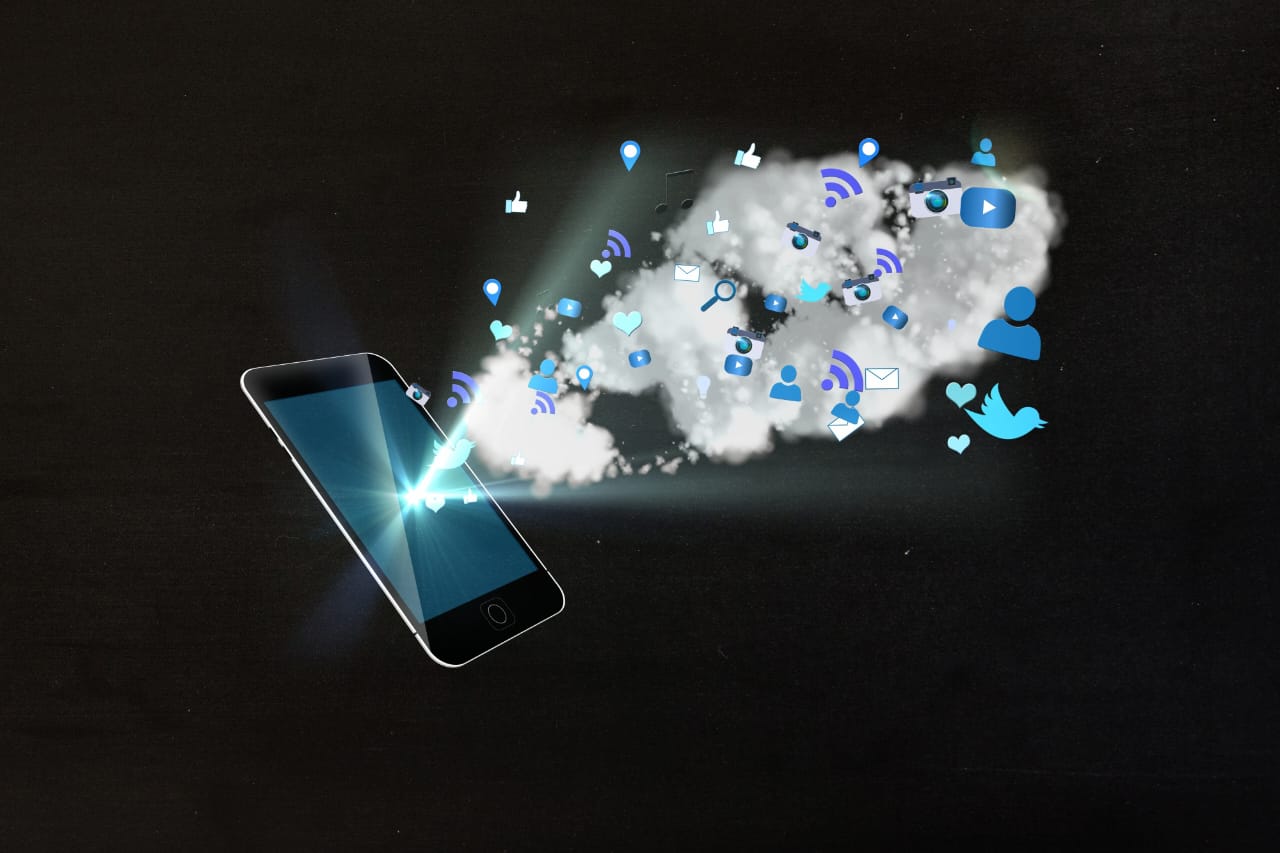Before we had smartphones that fit in our pockets and let us do everything from browsing the Internet to watching videos, there was 1G. This was the first generation of cellular network technology, and a big step away from old-fashioned landline phones. 1G networks first appeared in the 1980s, and were very basic compared to today. Imagine a phone that looks like a brick, not something you’d want to carry with you. These early mobile phones could only be used to make calls. No texting, no internet, nothing else. It was simply about talking to someone else on the phone, but there were no wires connecting you to the wall.
The speeds of these 1G networks were incredibly slow by today’s standards. They could only transfer data at a maximum speed of 2.4 kilobits per second. To put it in perspective, it’s like trying to download a song at a snail’s pace. And even at that slow speed, they could only handle voice calls. Since 1G technology was very new and simple it had a lot of problems. The sound quality of calls was often poor, and there were areas where you might not get a signal at all. It was like a phone that worked occasionally and made very little noise when it did.
Another big problem with 1G networks was security. Since they used radio waves to send signals, anyone with a radio scanner could hear your call. There was no way to encrypt your conversations, so your private conversations weren’t really private. It was like having a phone conversation in a crowded room where everyone could hear you. Overall, the 1G network was a starting point, the first step towards today’s mobile world. Although they were limited and had many shortcomings, they laid the foundation for the development of faster, more capable networks that came later. It’s hard to imagine now, but there was a time when wireless phone calls were a big deal.
Birth of mobile communications: 1G network
The journey to our always-connected world began with the humble beginnings of the 1G cellular network. This was the first step towards transitioning communications from fixed-line systems to mobile.
What is 1G?
Imagine a world without smartphones. A world where phones were big, heavy and could only be used for talking. This is the world of 1G.
1G means first generation of mobile network. These were the first phones that allowed people to talk to each other without wires. Before 1G, phones were fixed to one place, such as at home or in an office. But 1G changed that. It was like magic – you could talk to anyone, anywhere! However, don’t imagine the amazing phones we have today. 1G phones were very big and heavy. They looked like bricks compared to the slim devices we carry in our pockets. And that’s not all. They had very short battery life, which meant they would drain quickly. Also, the sound quality wasn’t great, and often, calls would drop.
These phones could only make calls. No texting, no internet, no games – just talking. It was a very basic way to communicate compared to what we have now. Even though 1G phones were limited, they were a big step forward. They were the starting point for the amazing mobile technology we enjoy today. It’s hard to imagine life without being able to make calls on the go, and it all started with 1G. Although 1G may seem old-fashioned now, it’s important to remember that it was a revolutionary technology in its time. It laid the foundation for the incredible advancements we’ve seen in mobile communications.
A Brief History of 1G
The idea of talking on the phone without tethering may seem common now, but it wasn’t always possible. The journey to the smartphones we use today began with the first generation of mobile networks, or 1G. The foundation for 1G networks was laid in the 1970s. Scientists and engineers were busy experimenting and figuring out how to make the phone work without wires. But it took a few more years to turn these ideas into something people actually used.
Japan: Mobile Pioneer
The world’s first commercial 1G networks did not arrive until the late 1970s. It was a great issue! Japan was the first country in whole world to do so. A company called Nippon Telegraph and Telephone (NTT) launched a new network in the busy city of Tokyo in 1979. This was a huge step forward because it started people talking on the phone while on the go.
America also joins this race
Shortly after Japan’s success, the United States also began using 1G networks. In 1983, a Chicago-based company called Ameritech introduced its 1G network. They used phones made by Motorola, a name you may recognize today. This was the beginning of many Americans being able to use a mobile phone.
These early mobile phones were quite different from today’s mobile phones. They were big and heavy, like bricks, and their batteries didn’t last long. But even if they weren’t perfect, they were the first step toward the amazing mobile world we have today. So, the next time you use your smartphone to talk, text, or watch a video, remember that it all started with those early 1G networks in Japan and the United States. It’s been a long way from big, heavy phones to the tiny computers we carry in our pockets!
How does 1G work?
Imagine a world without smartphones, where making phone calls was a big deal. This was the reality before the arrival of 1G network. 1G, or first generation of mobile networks, were the earliest wireless phone systems. They were a leap ahead of the useless car phones that came before them. However, they were quite basic compared to today’s technology.
Instead of using fancy computer code like modern phones, 1G phones used something called analog technology. This means that your voice was converted into continuous electrical waves, like waves on a pond. These waves were then sent through the air to the person you were calling. Although it may seem simple, it had some major drawbacks. A major problem was that there were not many channels for calls. This meant that calls were difficult to connect on busy days or in crowded places. It was like trying to use a single-lane road for a highway full of cars. Everyone was stuck in traffic, or in this case, busy signals.
Another issue was call quality. Due to analog technology, phone calls were often noisy and unclear. It was like trying to talk to someone on the other side of a busy room. Static and interference were common problems, making it difficult to understand what the other person was saying. And if you think making calls is bad, try using the internet on a 1G phone. It was almost impossible. These phones were built for voice calls only, and sending data was incredibly slow. It was like downloading an entire movie on a dial-up modem.
Despite these problems, 1G was a groundbreaking technology. It showed the world that wireless communication was possible, and it opened the door to the amazing phones we have today. It was the first step in a long journey that led to faster speeds, better quality, and countless new features. Although 1G may seem outdated now, it is important to remember that it was a huge leap forward in its time. It laid the foundation for the mobile world we know today.
Transition to 2G
Imagine trying to have a clear phone conversation in a noisy room. It’s a bit like using a first generation mobile phone (1G). Signals were weak, sound often broke up, and you could only make calls. No fancy texting or internet surfing! These early mobile phones were like radios. They used analog signals, which are like continuous waves. Think of a record player; The needle moves up and down to produce sound. Although it worked for basic calls, it had major problems. The quality was poor, especially in crowded areas, and there were not many phones that could connect at the same time. It was like a busy party where everyone was trying to talk over each other.
Therefore, people wanted something better. This is where 2G came in. It was like upgrading from an old record player to a digital music player. Instead of using continuous waves, 2G used digital signals, which are like a series of on and off switches. Due to this the signal became very clear and strong. Think of it this way: When you send a text, it’s broken into smaller pieces of digital information. These pieces travel through the network and are put back together at the other end. It’s like sending a puzzle through the mail and keeping it completely intact.
2G brought many improvements. Call quality was much better, even in places where a lot of people were using their phones. And for the first time, people could do more than just talk. They could send short messages (SMS), what we now call texts. This was a game-changer! But that was not all. 2G also made it possible for phones to connect to the Internet, although it was quite slow compared to today’s standards. 2G netwprk opened up a whole new world of possibilities. People can start checking email, browsing simple websites, and even downloading small files.
In the early 1990s, 2G networks began replacing older 1G systems. It was like switching from black and white TV to color TV. This was a big step forward for mobile technology. Although 2G may seem slow compared to today’s superfast networks, at the time it was a huge leap forward. This laid the groundwork for the faster and more efficient networks that followed. This was the first step in transforming the mobile phone from a simple calling device to the powerful tool we use today.
Effect of 1G
Although 1G may seem primitive compared to today’s standards, its impact cannot be overstated. It laid the foundation for the mobile communications industry, and its development led to innovations that have shaped our world.
- Economic growth: The introduction of mobile phones created new industries, jobs and economic opportunities.
- Social change: Mobile phones have changed the way people communicate, connect and interact with each other.
- Technological advancements: The challenges faced by 1G networks spurred research and development, leading to the creation of more advanced technologies.
The story of how we can talk and connect with anyone, anywhere, anytime begins with the first generation of cellular networks, or 1G. This was the humble starting point of the technological revolution that has changed our lives.
Unlike the sleek smartphones we have today, 1G mobile phones were bulky beasts. Imagine devices the size of bricks whose batteries drain quickly, leaving users with limited talk time. These early phones were a far cry from the pocket-sized powerhouses we’re now accustomed to. Central to 1G technology was analog, a method of communication that presents sound waves as continuous electrical signals. This is different from digital technology, which uses separate numbers to represent information. While analog technology had been around for quite some time, its application to mobile phones was unprecedented.
To understand how 1G works, think of a huge area divided into small segments called cells. Each cell had a base station, like a radio tower, which communicated with mobile phones within its range. When you make a call, your phone connects to the nearest base station. As soon as you moved, your call was seamlessly transferred to another base station in the next cell, a process known as handover. However, 1G had its limitations. Because it used analog signals, call quality could be affected by interference and noise. Furthermore, the network was capacity restricted, meaning that only a limited number of calls could be handled in a particular area. This often resulted in dropped calls and poor reception.
Perhaps the most significant drawback of 1G was its lack of security. Since analog signals are essentially continuous wave forms, it was relatively easy for someone to intercept and listen to a conversation. This made 1G highly vulnerable to espionage and fraud, causing serious concerns among users. Despite these challenges, 1G was a major achievement. It marked the beginning of mobile communications, allowing people to stay connected even while on the go. Although its capabilities were basic by today’s standards, it laid the foundation for the next generations of cellular technology that would give us the mobile world we know today.
While 1G may seem primitive in retrospect, it is important to remember that it was a pioneering technology. Lessons learned from its limitations led to the development of 2G, 3G, 4G, and eventually 5G, each offering significant improvements in speed, capacity, and security. The journey from bulky analog phones to smartphones, which are now extensions of us, is a testament to human ingenuity and the constant pursuit of technological progress. It all started with 1G, a groundbreaking technology that, despite being limited by today’s standards, was a huge leap forward in its time.
Read Also:
- Evolution Of 5G Cellular Network Technology
- What is 5G? How Does 5G Network Technology Work
- Pros and Cons of 5G technology in Health








Leave a Reply